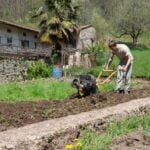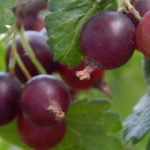Water gardens offer a unique and visually stunning way to incorporate nature into our living spaces. While they are often associated with ornamental plants and aquatic life, water gardens also provide an excellent opportunity for cultivating vegetables. Not only do they add color and variety to the garden, but they also have several advantages over traditional land-based vegetable gardens.
Growing vegetables in water gardens allows for efficient water usage, as the plants are constantly hydrated without the need for excess irrigation. This can be especially beneficial in regions where water scarcity is a concern. Additionally, water gardens require less maintenance compared to conventional gardens, as the water helps regulate temperatures and fend off pests naturally.
When considering which vegetables to grow in your water garden, certain characteristics should be taken into account. These include a tolerance to waterlogged conditions and the ability to thrive in shallow waters. By selecting vegetables that can withstand these conditions, you can ensure optimal growth and yield.
In the following sections, we will explore some of the best options for vegetable cultivation in water gardens. From nutrient-rich watercress to lotus root with its delectable crunch, we’ll guide you through choosing the right vegetables that will thrive in your aqua oasis. Whether you’re a seasoned gardener or just starting out, this article will provide invaluable tips and techniques on growing these versatile crops in your own water garden paradise.
Benefits of growing vegetables in water gardens
Growing vegetables in water gardens offers several benefits, making it an attractive choice for gardeners who want to maximize efficiency and reduce maintenance. One of the main advantages of growing vegetables in water gardens is efficient water usage.
Water gardens are designed to retain and recycle water, minimizing water wastage compared to traditional soil-based gardening methods. The water in a water garden is constantly recirculated through the system, providing a consistent source of moisture for the plants without excessive evaporation.
Another benefit of growing vegetables in water gardens is reduced maintenance. Unlike soil-based gardening, which requires regular watering and weeding, a well-designed water garden can significantly reduce the need for these tasks.
The constant supply of moisture in a water garden eliminates the need for frequent watering, while the absence of soil reduces the growth of weeds that compete with vegetable plants for nutrients and space. This translates to less time spent on maintenance chores and more time enjoying the fruits (or vegetables) of your labor.
Furthermore, growing vegetables in a water garden can also help create a visually appealing and tranquil environment. Water features such as ponds or fountains add a sense of serenity and ambiance to any outdoor space. By incorporating edible plants into your water garden, you not only enhance its beauty but also reap the benefits of homegrown produce right outside your doorstep.
| Benefit | Description |
|---|---|
| Efficient Water Usage | Growing vegetables in water gardens allows for efficient use of water with constant circulation and minimal evaporation. |
| Reduced Maintenance | A well-designed water garden minimizes the need for frequent watering and weeding compared to traditional soil-based gardening methods. |
| Enhanced Aesthetics | Incorporating vegetable plants into your water garden enhances its beauty, creating a visually appealing and tranquil environment. |
Characteristics to consider
Tolerance to waterlogged conditions
When choosing vegetables for your water garden, it’s important to consider their tolerance to waterlogged conditions. Some vegetables are better suited for growing in wet environments and have the ability to withstand soggy soil or shallow water levels. These plants typically have adaptations that allow them to uptake oxygen from their roots even in waterlogged conditions.
Ability to thrive in shallow water
In addition to tolerance to waterlogged conditions, you’ll also want to select vegetables that can thrive in shallow water. The depth of your water garden will vary depending on its design, so it’s crucial to choose vegetables that can flourish in these specific growing conditions. Vegetables with long stems or roots may struggle in shallow waters, while those with shorter rooting systems are more likely to thrive.
Vegetable varieties suitable for water gardens
There is a wide variety of vegetables that are well-suited for growing in water gardens. Some popular choices include:
- Watercress: This leafy green thrives when submerged in water and can be harvested as baby leaves or mature plants.
- Lotus root: The edible tuber of the lotus plant is often used in Asian cuisine and grows best when partially submerged in soil and water.
- Taro: A starchy root vegetable commonly found in tropical regions, taro can grow well in moist environments.
- Water spinach: Also known as kangkong or swamp cabbage, this fast-growing vegetable is excellent for adding leafy greens to your diet.
- Water chestnuts: These crunchy, sweet tubers require shallow waters and sandy soil for optimal growth.
By considering the tolerance of vegetables to waterlogged conditions and their ability to thrive in shallow waters, you can choose the best options for your own unique water garden setup. Always ensure proper care and provide appropriate growing conditions for these selected vegetable varieties.
Top vegetable choices
Water gardens offer a unique opportunity to cultivate a diverse range of vegetables that thrive in aquatic environments. When it comes to selecting the best vegetables for your water garden, it’s important to consider their adaptability to waterlogged conditions and ability to thrive in shallow water. Here are some top vegetable choices that are well-suited for water gardens:
- Watercress: Known for its peppery flavor and nutrient-rich leaves, watercress is an excellent addition to any water garden. It can tolerate both submerged and partially submerged conditions, making it a versatile choice.
- Lotus root: Not only does lotus root add visual appeal with its unique shape and color, but it is also a culinary delicacy. This vegetable thrives in shallow water, typically requiring 3-6 inches of water depth.
- Taro: Taro is a tropical plant with large heart-shaped leaves and starchy tubers. It performs exceptionally well in moist soil or standing water, making it an ideal choice for water gardens.
- Water spinach: Also known as kangkong, this leafy green vegetable is popular in Asian cuisines. It prefers wet soil or shallow waters up to 6 inches deep.
- Water chestnuts: These crunchy delights are perfect for stir-fries and salads. Water chestnuts require about 3-4 inches of water depth and thrive in sandy soil or gravel beds.
When choosing vegetables for your water garden, it’s important to provide them with suitable containers or pots that can hold enough moisture without becoming overly saturated. Selecting containers with adequate drainage holes will prevent water from stagnating around the roots.
To ensure optimal growth, aim for an appropriate water depth depending on the specific vegetable’s requirements. Most vegetables mentioned above thrive in shallow water, ranging from 3-6 inches deep. However, it’s crucial to monitor the water level closely to avoid overflooding or drying out.
Proper nutrient management is also essential for the success of your water garden vegetables. You can incorporate aquatic plant fertilizers or organic compost into the soil before planting. Regularly test the water quality and adjust the nutrient levels accordingly to promote healthy growth.
By selecting the right vegetables and providing them with appropriate growing conditions and care, you can turn your water garden into a vibrant oasis that not only enhances the visual appeal but also offers an abundant harvest of fresh and flavorful produce.
Growing tips and techniques
Growing vegetables in water gardens can be a unique and rewarding experience, but it requires some specific knowledge and techniques to ensure success. Here are some practical tips and advice on how to effectively grow vegetables in water gardens.
One important consideration when growing vegetables in water gardens is the choice of containers or pots. It is essential to use containers that are suitable for aquatic plants, such as non-toxic materials like plastic or terracotta. The size of the container should depend on the ultimate size of the vegetable being grown, allowing enough space for root development. Additionally, consider containers with a wide base to provide stability and prevent tipping over in the water.
The ideal water depth for growing vegetables in water gardens varies depending on the specific vegetable species. Generally, a minimum depth of 6 inches is recommended to allow proper root growth and prevent soil erosion. However, deeper water may be required for taller plants or those with extensive root systems. It’s important to monitor and maintain consistent water levels to ensure that the plants receive adequate hydration without becoming overly saturated.
Proper nutrient management is crucial for successful vegetable growth in water gardens. Since soil nutrients are not readily available in aquatic environments, it is necessary to supplement them through fertilization. Consider using slow-release fertilizers specifically formulated for aquatic plants or organic alternatives like compost tea. Regularly test the nutrient levels in your water garden and adjust fertilization accordingly to avoid excess nutrient buildup which can lead to algae growth.
By following these tips and techniques, you can create an optimal environment for growing vegetables in your water garden. Remember that each vegetable has specific requirements, so it’s essential to research individual plant needs before planting them together. With careful attention to container selection, ideal water depth, and proper nutrient management, you’ll be well on your way to harvesting an abundant crop from your beautiful water garden.
Companion planting
Companion planting is a gardening technique that involves the intentional pairing of different plants to maximize their growth and health. In water gardens, companion planting offers several benefits such as nitrogen fixation, pest control, and overall ecosystem resilience. By strategically selecting suitable companion plants for various vegetables in water gardens, you can encourage beneficial interactions between different species and enhance the success of your vegetable cultivation.
One major advantage of companion planting in water gardens is nitrogen fixation. Some plants have the ability to capture nitrogen from the air and convert it into a form that can be absorbed by other plants. This process reduces the need for additional nitrogen fertilizers and promotes healthy plant growth. For example, legumes like water spinach (Ipomoea aquatica) are excellent nitrogen fixers and can be planted alongside other vegetables to provide them with a natural source of this essential nutrient.
Another benefit of companion planting in water gardens is pest control. Certain plant combinations help repel harmful insects or attract beneficial ones that prey on pests. For instance, marigolds (Tagetes spp.) are known for their ability to deter nematodes, which are microscopic worms that can damage plant roots. By interplanting marigolds with vegetables like lotus root (Nelumbo nucifera), you can protect the latter from nematode infestations.
When choosing suitable companion plants for your water garden vegetables, make sure they have similar growing requirements in terms of moisture levels and sunlight exposure. Additionally, consider their relative sizes so that one plant does not overshadow or hinder the growth of another.
Suggested Companion Plants
- Watercress (Nasturtium officinale): Companion plants include mint (Mentha spp.) and chives (Allium schoenoprasum).
- Lotus Root (Nelumbo nucifera): Suitable companions include marigolds (Tagetes spp.) and water chestnuts (Eleocharis dulcis).
- Taro (Colocasia esculenta): Companion plants include ginger (Zingiber officinale) and horsetail (Equisetum spp).
- Water Spinach (Ipomoea aquatica): Suitable companions include legumes like beans (Phaseolus vulgaris) and peas (Pisum sativum).
- Water Chestnuts (Eleocharis dulcis): Companion plants include lotus root (Nelumbo nucifera) and watercress (Nasturtium officinale).
By incorporating companion planting into your water garden vegetable cultivation, you can create a harmonious ecosystem that supports the health and productivity of your crops. Experiment with different combinations to find what works best in your specific water garden setup.
Harvesting and utilization
Harvesting and Utilization: Elaborating on the Best Time to Harvest Vegetables, Storage Methods, and Creative Ways to Incorporate Water Garden Vegetables into Delicious Recipes.
Once your vegetables have successfully grown in your water garden, it’s crucial to know the optimal time for harvesting. Harvesting at the right moment ensures that you enjoy vegetables at their peak flavor and nutritional value. Different vegetables have varying maturity periods, so it’s important to be aware of the specific timing for each variety.
Here are some general guidelines on when to harvest common water garden vegetables:
- Watercress: Start harvesting small sprigs or leaves once they reach a length of 4-6 inches. Regular pruning of the plants will promote new growth.
- Lotus Root: Wait until late summer or early autumn when the lotus plants have fully bloomed. You can dig out the lotus tubers from underwater mud, rinse them thoroughly, and store them in a cool place for up to two weeks.
- Taro: Begin harvesting taro corms when they have grown to around 2-3 inches in diameter. The plants can continue growing while you gradually harvest them over time.
- Water Spinach: Snip off individual stems or leaves as needed once they have reached sufficient maturity (around 6-8 inches long).
- Water Chestnuts: It’s best to wait until late autumn when the leaves turn yellow and start wilting before digging up the tubers from beneath the waterbeds.
To make the most out of your harvested water garden vegetables, proper storage is essential. Here are some storage methods for different types of vegetables:
- Watercress and Water Spinach: Place these leafy greens in a plastic bag lined with paper towels, seal it tightly, and store it in your refrigerator’s vegetable crisper drawer for up to one week.
- Lotus Root and Taro: Store these root vegetables in a cool, dark place with good ventilation, such as a cellar or pantry. Keep them unwashed and separate from other produce to prevent moisture buildup and spoilage. They can last for several weeks under these conditions.
- Water Chestnuts: Store the water chestnuts in a perforated bag to allow air circulation and keep them in the refrigerator’s vegetable crisper drawer. They should stay fresh for up to two weeks.
Now that you have harvested and stored your water garden vegetables, it’s time to explore their culinary potential. Here are some creative ways to incorporate them into delicious recipes:
- Watercress: Add it to salads, soups, or stir-fries for a peppery flavor boost. Try making watercress pesto or use it as a garnish for sandwiches and omelets.
- Lotus Root: Stir-fry sliced lotus root with other veggies or marinate it in spices and grill until crisp on the outside. You can also pickle it for a tangy side dish.
- Taro: Peel, boil, and mash taro corms for a creamy alternative to mashed potatoes. Alternatively, you can slice them into chips and bake them until crispy.
- Water Spinach: Use it as an ingredient in stir-fries, noodles, or soups. It pairs well with garlic, ginger, oyster sauce, or soy sauce.
- Water Chestnuts: Enjoy them raw as crunchy snacks or incorporate them into stir-fries, salads, or desserts like water chestnut cake.
By harvesting your water garden vegetables at their prime and exploring different culinary techniques, you can fully enjoy the unique flavors and textures of these aquatic delights while adding variety to your meals. Remember always to experiment and let your taste buds guide you towards new creations using the bounty of your water garden harvests.
Maintenance and troubleshooting
Maintaining a water garden is essential to keep it healthy and thriving. Like any other type of gardening, water gardens can face certain issues such as algae growth and pest infestations. Addressing these common problems promptly will help ensure the overall well-being of your water garden.
One of the most common challenges in water gardens is algae growth. Algae can quickly spread across the surface of the water, causing it to turn green or slimy. To prevent excessive algae growth, regular maintenance is crucial. Here are some tips for handling and preventing algae:
- Control sunlight: Algae thrive in sunlight, so you can limit its growth by providing shade to your water garden. You can use floating plants like water lilies or install a shade sail above the pond.
- Maintain proper nutrient balance: Excess nutrients contribute to algae growth. Test the nutrient levels in your water garden regularly and adjust accordingly with organic additives or by incorporating more suitable plants.
- Install a pond filter: A good filtration system helps remove excess nutrients from the water, reducing the chance of algae bloom.
In addition to algae, pests can also find their way into your water garden and cause damage to your vegetables. Some common pests include aphids, snails, and mosquito larvae. Here are some tips for dealing with common pests in your water garden:
- Attract beneficial insects: Encouraging beneficial insects like dragonflies and damselflies to inhabit your water garden helps control mosquitoes naturally.
- Use physical barriers: Floating row covers or netting can prevent pests like snails from reaching your vegetable plants.
- Regular inspection and removal: Check your plants frequently for signs of pest infestations, such as chewed leaves or small holes in foliage submerged under the surface of the water.
- Organic pest control methods: Use natural alternatives such as neem oil or soap sprays that are safe for aquatic life but effective in controlling pests.
By addressing these common issues promptly and employing appropriate preventative measures, you can keep your water garden healthy and thriving. Regular maintenance and troubleshooting will ensure that your vegetables continue to grow and provide you with a bountiful harvest.
| Common Issues | Tips for Handling and Prevention |
|---|---|
| Algae Growth | – Control sunlight by providing shade
|
| Pest Infestations | – Attract beneficial insects
|
Conclusion
In conclusion, cultivating vegetables in water gardens presents an array of benefits for both the environment and our culinary pursuits. The efficient use of water and reduced maintenance make this method of vegetable cultivation highly advantageous. By carefully considering the characteristics of suitable vegetables and selecting the top choices like watercress, lotus root, taro, water spinach, and water chestnuts, one can ensure a thriving crop in their water garden.
To successfully grow vegetables in water gardens, it is important to follow some key tips and techniques. Choosing the right containers or pots, maintaining an ideal water depth, and managing nutrients properly are all crucial aspects to consider. Additionally, companion planting can further enhance the growth of vegetables by providing needed nitrogen fixation and natural pest control. Incorporating suitable companion plants with various vegetables will create a beneficial ecosystem within your water garden.
Once your vegetables are ready for harvest, it is essential to know the best time to pick them and how to store them properly for future use. Additionally, there are a multitude of creative ways to incorporate your fresh water garden veggies into delicious recipes that will impress even the most discerning palates. From salads to stir-fries, these flavorful additions will elevate any dish.
In order to maintain a healthy water garden ecosystem and prevent common issues like algae growth or pest infestations from arising, there are specific steps you can take. By practicing regular maintenance routines and implementing preventative measures such as proper filtration systems or organic pest control methods, you can enjoy your vibrant vegetable oasis without interruption.
Overall, growing vegetables in water gardens contributes positively towards environmental sustainability while also offering culinary enjoyment. By embracing this unique gardening technique and following our outlined guidelines, you can create an abundant and vibrant oasis that provides beauty for the eyes as well as nourishment for the body.
Frequently Asked Questions
What vegetables grow best in water?
Several vegetables thrive when grown in water, known as hydroponics. Some of the vegetables that grow best in water include lettuce, spinach, kale, and bok choy.
These leafy greens require a continuous supply of water to develop their roots and absorb nutrients efficiently. Furthermore, water-grown vegetables tend to have a faster growth rate and can yield crops with vibrant colors and flavors.
What is the easiest vegetable to grow in water?
Among the various vegetable options suitable for growing in water, one of the easiest to cultivate is the green onion or scallion. Green onions can be regrown by placing the leftover white root ends in a container filled with water.
Within just a few days, new green shoots will start emerging from the top portion. This process allows for a continuous harvest of fresh green onions throughout the year without needing to plant new seeds or buy additional produce.
What vegetable scraps can you grow in water?
Many vegetable scraps possess the remarkable ability to regenerate and grow when placed in water. Some common vegetable scraps that can be grown in water include carrot tops, celery bottoms, garlic cloves, and even sweet potato vines.
For example, carrot tops can be placed in a shallow dish of water with their cut end submerged while being exposed to sunlight. Over time, new green sprouts will emerge from these tops, providing edible greens that can be used as garnish or added to salads and soups.Socket API also provides an interface for network applications written using procedural style code where response may vary based on inputs provided within code itself rather than any external input source like database etc.Socket API consists of several functions which help applications interact & communicate with each other over IP/TCP network.Many high level languages provides libraries/built-in functions specifically designed on top Socket’s API for easy & better way to communicate between client & server components written using that language.Socket data structures consists of several structs or datatypes which applications use namely- Socket fd/socket descriptor (an integer representing an opened socket) – sockaddr (a struct consisting of network address) – sockaddr_in (struct comprising of Internet address including port number) – in_addr (struct wherein IP address is stored)Many high level languages provide built-in socket libraries to develop network applications like C library or Python’s socket module.

If you’re looking to get into vegetable gardening, or are just looking for some tips on how to make your current garden better, then you’ve come to the right place! My name is Ethel and I have been gardening for years. In this blog, I’m going to share with you some of my best tips on how to create a successful vegetable garden.





